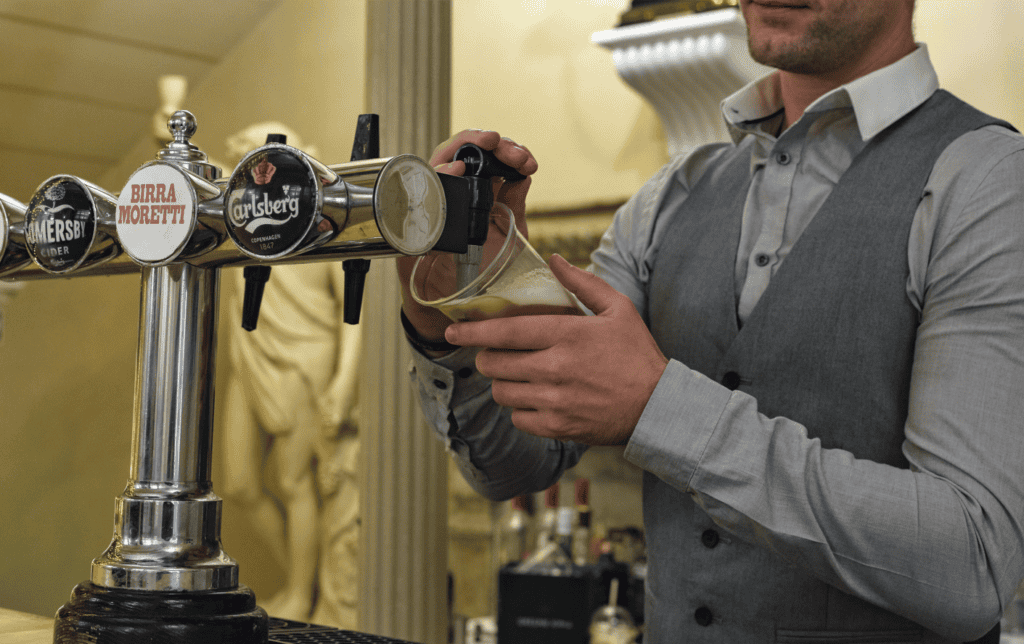The Pub Tie - A Pathway to the Pub Trade or a Millstone Round Your neck?
Reflections of a Reluctant Pub Landlady
Introduction
The pub tie is a controversial topic, and it plays a significant role in why pubs may charge what seems like a lot of money for a pint of beer. Before you complain about the price of a pint, consider the inflated price a tied pub has to pay to purchase it. Add on VAT, beer duty, and rising running costs, and it’s easy to see why buying a pint isn’t cheap.
For many aspiring publicans, the pub tie can seem like an attractive route into the trade. The promise of a ready-to-go business, often with a lower initial financial outlay than buying a freehold, is undeniably appealing. However, as many tied pub landlords have discovered, the reality of running a tied pub can be challenging, with inflated prices on supplies cutting deeply into potential profits.
Having run four pubs—three of which were tied—I’ve seen firsthand the struggles and steep learning curve that comes with this system. While the tie helped us get started, it quickly became apparent that the financial constraints imposed by the tie were stifling our ability to run a profitable business.
The Financial Burden of the Pub Tie
One of the biggest challenges tied landlords face is the inflated prices they must pay for beer and other supplies. When you’re tied to a pub company (Pub-Co), you’re locked into buying your stock from them at prices that can be as much as 60% higher than purchasing from a local wholesaler. This, coupled with high rent, can make it incredibly difficult to turn a profit.
In my own experience, it became clear that the margins simply weren’t adding up. Despite our best efforts to cut costs, streamline operations, and drive sales, the numbers just weren’t working in our favour. It wasn’t just a matter of working harder—it was about the inherent imbalance in the system.
The Issue with Brulines
Another major issue we faced was the reliance of the Bruline systems. This system was supposed to measure the volume of beer sold and compare it to what has been purchased, ensuring that the pub company gets their fair share. However, the accuracy of these systems is often questionable, when it doesn’t always differentiate between beer or line-cleaning. In my pubs, we found discrepancies between what the Bruline indicated and what we had actually sold. For example, one reading showed we had been pouring beer at 2 a.m.—despite the pub being locked up, alarmed, and nothing showing on CCTV. This led to disputes that further strained the relationship with the Pub-Co and added yet another layer of stress to an already difficult situation.
The Pub-Co also sent ‘Cellar Spies’ around periodically – unannounced inspectors who checked to ensure that you weren’t purchasing beer out of tie and questioned everything in your cellar. It’s hardly the foundation for a trusting relationship with your Pub-Co.
A Lengthy Court Battle and Hard-Won Freedom
After years of struggling under the tie, I knew something had to change. One of our pubs became the centre of a lengthy Pub Code Adjudication/court battle over our claim that we were entitled to a Market Rent Option (MRO). After a drawn-out process, and despite winning our claim, we sold that pub back to the Pub-Co. It was a hard decision, but it was the only way to relieve ourselves of the financial pressure.
With our other two pubs, we fought to negotiate free-of-tie leases. This was no small feat, but it was the only way we could see a path to a sustainable, profitable business. The freedom to shop around for suppliers and negotiate better prices made a world of difference. It has allowed us to run our pubs on our terms, making decisions that benefit our business and our customers. That said, the rent was massively adjusted upwards to compensate the Pub-Co for their loss of profit on beer sales.
The Pub Tie: A Double-Edged Sword
The pub tie system isn’t without its merits. It offers a lower barrier to entry for those who might not have the capital to buy a pub outright. It provides a ready-made business model and support that can be useful, especially for first-time publicans. For some, it can be the first step on the ladder to running a successful pub.
However, for many, the drawbacks outweigh the benefits. The financial burden, coupled with the lack of control over key aspects of the business, can make it incredibly difficult to succeed. It’s a system that, on balance, is skewed in favour of the Pub-Co rather than the landlord.
Moving Forward
My journey with the pub tie was far from smooth sailing. While I’m grateful for the opportunities it provided, I’ve learned that for a pub to truly thrive, it needs to be free to operate on its own terms. For those considering taking on a tied pub, I would advise going in with your eyes wide open. Understand the risks, know your numbers, and don’t be afraid to fight for what’s fair. Remember that the tie can include much more than beer, check the terms around soft drinks, insurances, income from gaming machines etc. Above all, make sure you understand the rack rate for the beer you will be purchasing and how that differs from local wholesale prices.
In the end, the best chance for success lies in having the freedom to make your own choices and the ability to negotiate the best possible deals for your business. Only then can you ensure that your pub is truly working for you, not just for the Pub-Co.
Read more about the controversial Bruline system here.
Struggling to make a profit in your pub? We can help – contact us now for a no-obligation chat.




